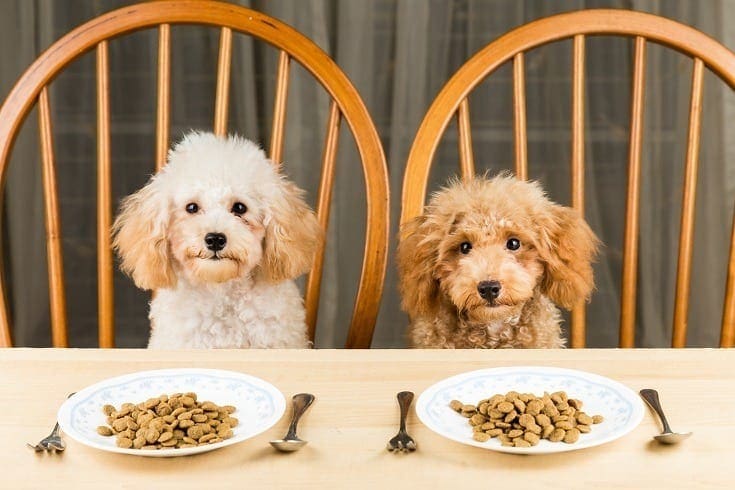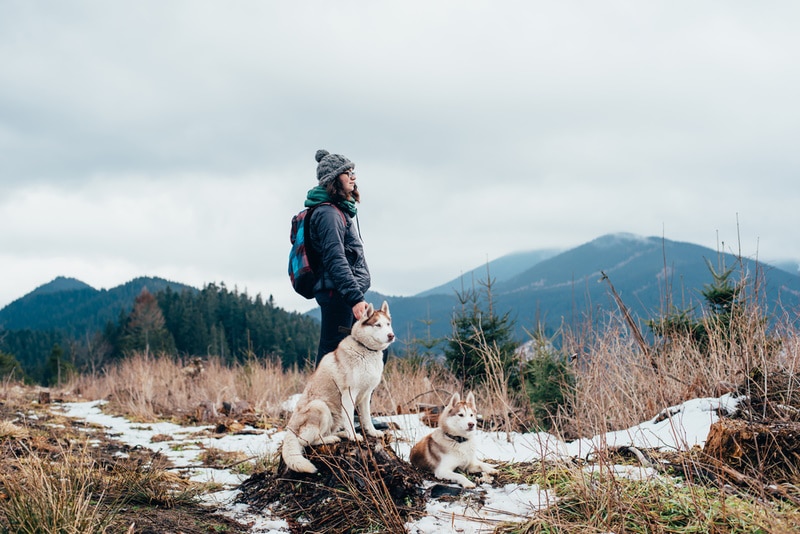Newfypoo vs Bernedoodle: Differences & Similarities (With Pictures)

Updated on
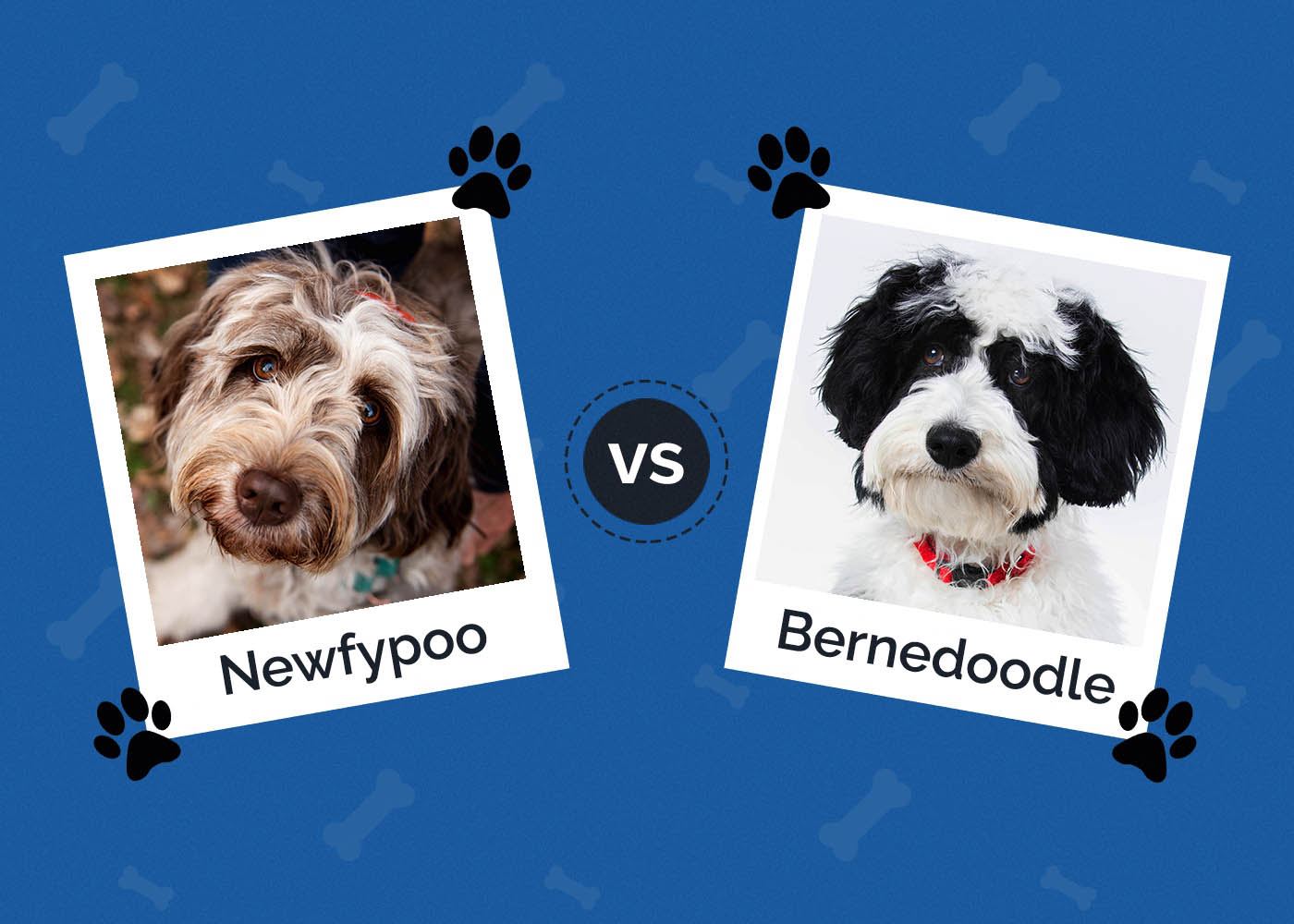
The Newfypoo and Bernedoodle are big, bright, beautiful dogs that make excellent pets. If you’re in the market for a new dog and stuck between these two mixed breeds, we can see why. When choosing between mixed breeds, your decision is always a little more complicated.
Still, by looking at a dog’s parent breeds, you can get a rough idea of the needs you will be required to meet, like how much exercise they need, health problems they might be prone to, activity levels, and temperament. To help you decide which dog is right for your home, we’ll examine the Newfypoo and Bernedoodle.
Visual Differences
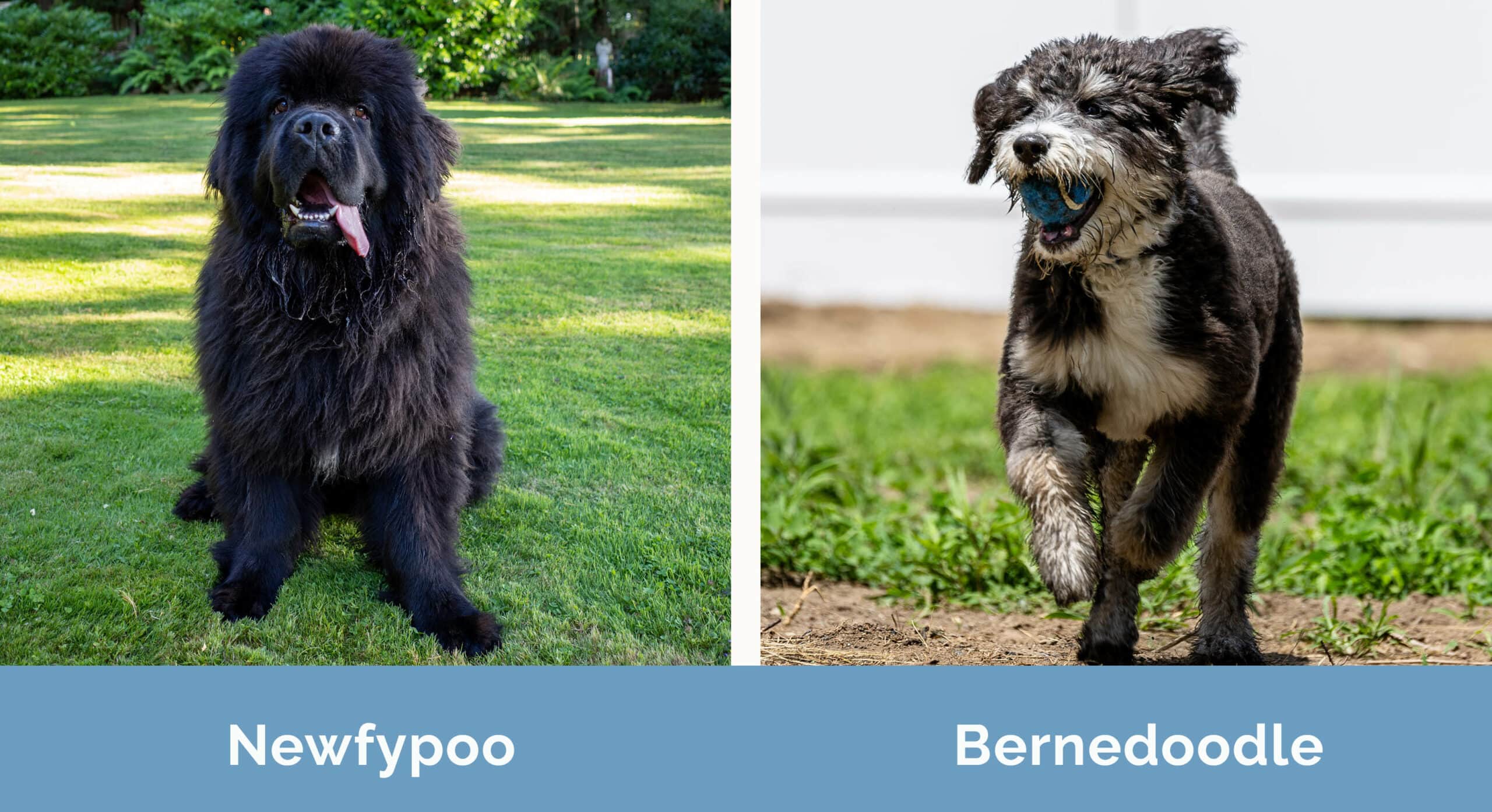
At a Glance
- Average height (adult): 22–30 inches
- Average weight (adult): 70–150 pounds
- Lifespan: 8–12 years
- Exercise: 1+ hours a day
- Grooming needs: Moderate
- Family-friendly: Yes
- Other pet-friendly: Yes
- Trainability: Intelligent, calm, easy to train
- Average height (adult): 23–30 inches
- Average weight (adult): 70–90 pounds
- Lifespan: 12–16 years
- Exercise: 1–2 hours a day
- Grooming needs: Moderate
- Family-friendly: Yes
- Other pet-friendly: Often
- Trainability: Intelligent, stubborn, easy to train
Newfypoo Overview
The Newfypoo is a mix of the water-loving giant Newfoundland and the highly intelligent Poodle. The Poodle has a long association with France, and people are sometimes surprised to find out that it is originally from Germany. They worked with duck hunters to retrieve waterfowl from the water and land, performed in the circus and later became beloved companion dogs.
Newfoundlands are known affectionately as Newfies and once helped Canadian fishermen by dragging carts and hauling nets. They have and still work as rescue dogs and were even thought to be the inspiration for Nana in J.M. Barrie’s novel “Peter Pan.” The Newfypoo is relatively new on the scene but is quickly gaining popularity.
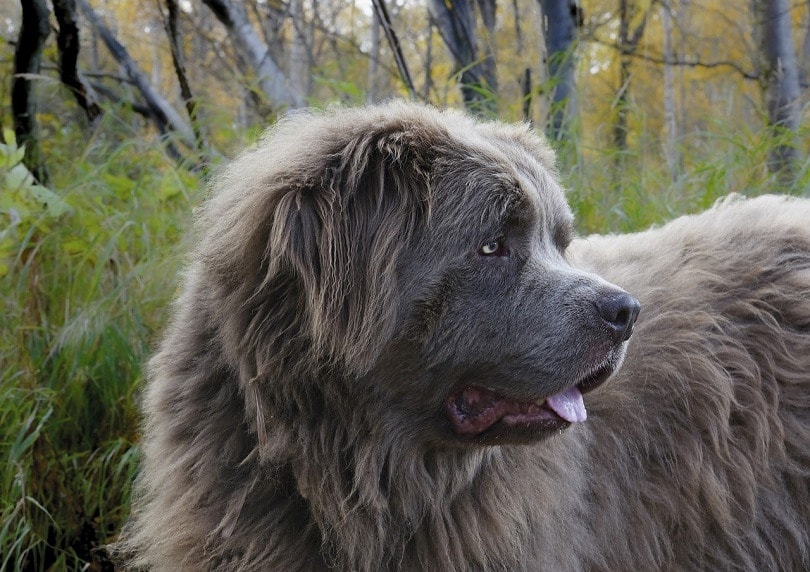
Personality
The Newfypoo is sociable, fun, kind, and playful. They love spending time with family and being in on the action; they aren’t shy dogs and will insert themselves into any social situation, which is perfect because their goofy personality will surely entertain your guests! They get on well with everyone, whatever their species, gender, or age.
Newfypoos are protective of their families and require socialization as early as possible to prevent aggression with other dogs. They’re gentle with children but should be supervised around young kids. Adult Newfypoos are large dogs, and although they’re tolerant of hyper infants, they should be monitored to ensure they don’t bump into or knock them over.
Exercise
Newfypoos require at least an hour of exercise daily to stay fit, strong, and healthy. They do not do well in apartments because they need space to move about. In addition to walks, they will also benefit from some free time in a secure yard or at least a run around a dog park.
Exercise and playtime are vital to a larger breed, especially when they’re still growing. Roughhousing or anything too overzealous could be detrimental to developing joints and bones.
Newfypoos also need adequate mental stimulation, and it’s crucial to invest in toys or games that will keep them thinking. They won’t do well with being left alone for long periods and could become loud, anxious, and destructive if they are lonely, bored, and haven’t been for a walk.
Training
Obedience training is essential for the Newfypoo, and the earlier you start, the better because controlling an unruly giant will be tricky. Their intelligence means they are easy to train, but it also means they will push the boundaries, so you will need to be firm and patient.
They also benefit from agility sports, scent-tracking games, and other training exercises. If you’re unsure about your abilities as a trainer, you can always work with a professional to ensure you get it right.
Health & Care
As a responsible owner, you will undoubtedly be investing in high-quality food, but even then, there are some health problems your dog is more prone to than other breeds. Common problems you might encounter are:
- Gastric dilation volvulus
- Hip dysplasia
- Sebaceous adenitis
- Subvalvular aortic stenoisis
Newfypoos are considered to be hypoallergenic, so they’re perfect for owners with allergies. They don’t shed much, but you must still brush through their dense coat to minimize tangles and mats. They don’t require baths unless they get dirty from an outdoor excursion.
Also, you will need to clip their nails (monthly) and brush their teeth regularly (at least three times a week) to keep their oral health in tip-top shape!
Suitable For:
The Newfypoo is suitable for active families with children of all ages and pets of any species as long as they are socialized appropriately. They’re big dogs, and they can sometimes forget how big they are, so training is crucial, as is teaching your children how to act around them. They’re not ideal for owners who are away from home frequently or those who don’t have time to train them.
They need plenty of space to burn off energy and mental stimulation to keep their sharp minds at work. They love their owners, and when properly trained, they make extraordinary pets.
Bernedoodle Overview
The Bernedoodle is a mix of the Bernese Mountain Dog and Poodle. Thanks to its shared parentage with the Newfypoo, we already know a little about this mix. Bernese Mountain Dogs (also known as Berners) are working dogs originally from Switzerland, where they guarded farmland, pulled carts, and drove cattle. They came close to extinction on more than one occasion but are now firmly in the top 25 dog breeds in the United States, according to the American Kennel Club (AKC).
Like the Newfypoo, the Bernedoodle is a relatively new breed but is already making its mark in the States.
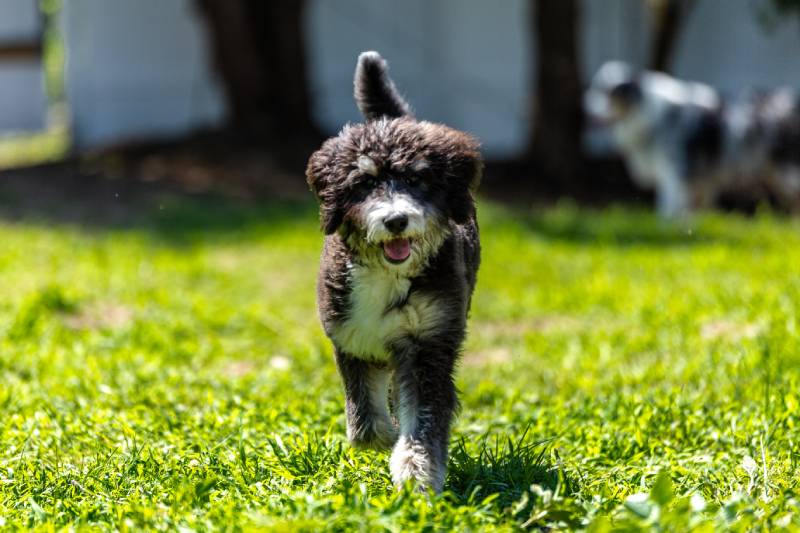
Personality
The Bernedoodle has inherited the Berner’s goofy personality and the Poodle’s intelligence to create a playful, friendly, affectionate companion dog. They are at their happiest when they are with their favorite people, and that includes children. While they are gentle around children, your kids will need to be taught how to behave around this giant so they don’t accidentally hurt them.
They have been known to be stubborn as puppies, but this personality trait seems to fade as they age. Early socialization is crucial for your Bernedoodle if you have young children or other pets, but it will also benefit your dog as an adult, so they are used to new situations and people.
Exercise
Bernedoodles require at least one walk a day, but preferably they will need around 2 hours of exercise that you can split into separate walks and playtime. It’s best if they have a fenced-in yard for running or at least can regularly visit the dog park.
If your Bernedoodle has been mixed with a smaller Poodle than the Standard, they might be able to handle apartment living, as long as you make sure to get in their daily walk. Thanks to their intelligence, Bernedoodles do well in canine sports and make excellent jogging and hiking partners.
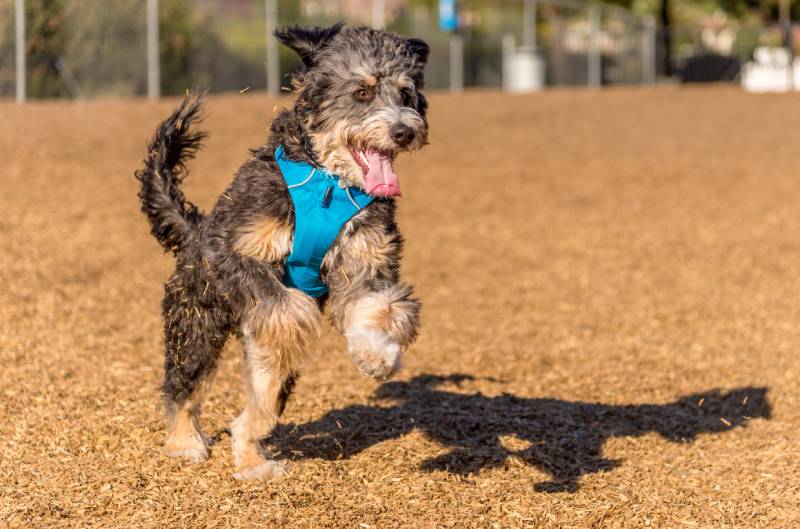
Training
The Bernedoodle is incredibly intelligent, and your puppy will quickly follow commands. It also means that they are clever enough to know if your heart isn’t really in it, and they’ll run mental rings around you if you aren’t firm enough.
The trick is to be patient, consistent, and calm. They do well with positive reinforcement and praise as opposed to harsh words. Because they are high-energy dogs, Bernedoodles require daily exercise and thrive when they follow a routine.
Health & Care
Bernedoodles are healthy canines, but there are some conditions they are prone to:
- Elbow dysplasia
- Hip dysplasia
- Skin issues
The Bernedoodle is considered hypoallergenic like the Newfypoo, which means they don’t shed as much as other dogs. They are slightly easier to groom than Newfypoos, and you can get away with brushing them once or twice a week. They don’t need regular baths unless they get particularly dirty, but it’s best to get them into a nail trimming and tooth brushing routine when they’re puppies.
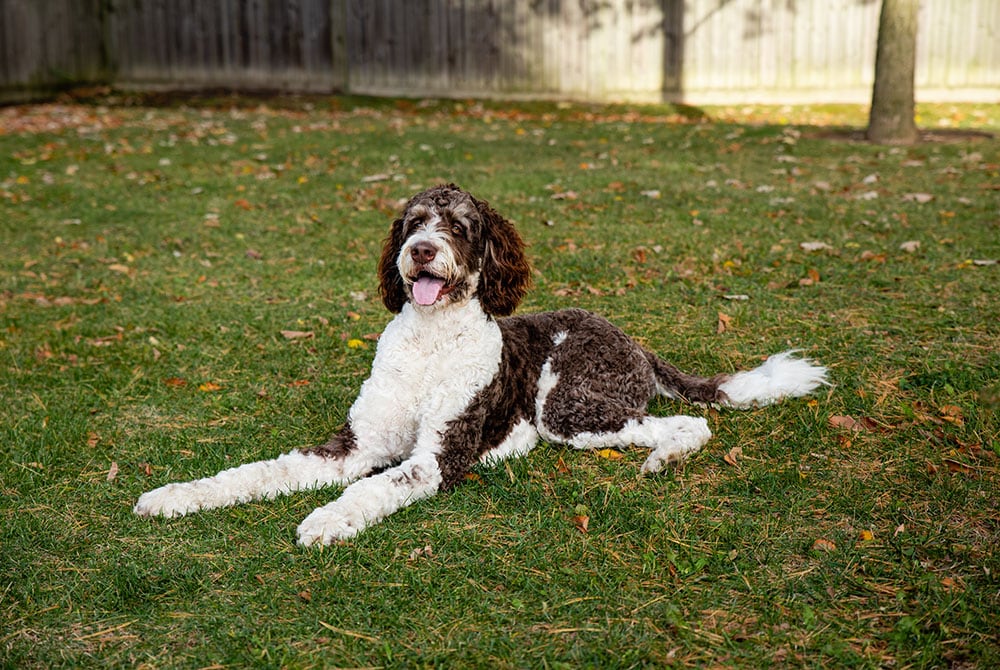
Suitable For:
Bernedoodles are suitable for families with children and pets as long as they have been introduced at a young age. They are gentle pups, but smaller children must be taught how to behave around them to avoid accidents. You will need the time and patience to train and exercise these dogs as they are large and require more exercise than Newfypoos.
Which Breed Is Right for You?
The Newfypoo and Bernedoodle are both mixed with Poodles and share many of the same traits. You’d be forgiven for having trouble deciding which dog you prefer because they are incredibly similar. They are both hypoallergenic, so they are perfect for allergy sufferers. They’re active, intelligent, gentle, goofy giants that make wonderful additions to the family.
However, Bernedoodles are slightly less demanding in terms of grooming than Newfypoos, but Newfypoos require less exercise than Bernedoodles. The Bernedoodle is smaller than the Newfypoo, so if space is an issue, that could be a deciding factor. If you know the parents of the dog you’re considering, you’ll get a rough idea of how big your pet will become.
Although Bernedoodles are more suitable for apartments than Newfypoos, they need a few hours of daily exercise to stay fit. Besides the minor differences, Newfypoos and Bernedoodles are remarkable canines and the perfect pets for active owners.
See Also:
- Bernedoodle vs Goldendoodle: The Differences (With Pictures)
- Mini Bernedoodle vs. Mini Goldendoodle: The Differences (With Pictures)
Featured Image Credit to: (L) Jeanne Sager Photography, Shutterstock | (R) Diane Diederich, Shutterstock



